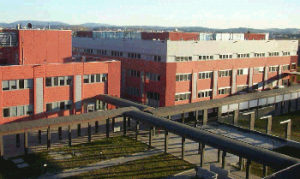
In 1980, after vandals attempted to use an abrasive kitchen cleanser to deface ancient petroglyphs in Arches National Park in Utah, Asmus was called in to use his technology to repair the damage, and "succeeded in removing most of the cleanser".

In 1978, Asmus used laser technology to uncover artwork in the California State Capitol building that had been repeatedly painted over since a 1939 remodeling, ultimately removing nine layers of paint to restore the original artwork. In 1975, Asmus developed "supersensitive sonar detectors" to assist art historian Carlo Pedretti and other scientists searching for The Battle of Anghiari, a lost painting by Leonardo da Vinci, at times referred to as "The Lost Leonardo", believed to be hidden beneath one of the later frescoes in the Salone dei Cinquecento (Hall of the Five Hundred) in the Palazzo Vecchio in Florence. Asmus continued working with Munk to create a three-dimensional record of the city of Venice in 1973, while continuing to investigate means of using lasers to clean statuary.

That same year, Asmus worked with holography pioneer Ralph Wuerker, with whom he "proved the feasibility of creating full-size holograms of statuary, permitting three-dimensional reproductions of the world's sculptural masterpieces". In 1972, Asmus "first applied laser cleaning to marble sculptures", and therefore "is considered to be the grandfather of laser art conservation". Through this process, Asmus discerned that he could use lasers to remove detritus encrusting the statues without harming the underlying works. In 1971, Asmus met oceanographer Walter Munk, who asked Asmus if he could make holograms of statues and art objects in Venice in order to preserve them. Pioneering use of lasers in art conservation Asmus then pioneered the use of holography, lasers, ultrasonic imaging, digital image processing, and nuclear magnetic resonance in art conservation, working to preserve or investigate works as diverse as the statues in Venice, frescoes of the California State Capitol, petroglyphs in Utah's Arches National Park, portraits by Rembrandt, the Terracotta Army in Xi'an, China, and the Mona Lisa. Having received his PhD from the California Institute of Technology, he initially applied his knowledge of high-energy excimer lasers in private sector organizations such as General Atomics, where he contributed to the ORION nuclear spaceship program.
#LACONA VII PROFESSIONAL#
Īsmus is widely published, with over 125 articles published in professional journals and 25 patents to his name. As of 2020, he taught at the Institute for Pure and Applied Physical Science at the University of California, San Diego, where he began working in 1974. John Fredrich Asmus (born 1937) is a research physicist who has focused his work on the use of scientific techniques in art conservation. California Institute of Technology (Ph.D.)


 0 kommentar(er)
0 kommentar(er)
